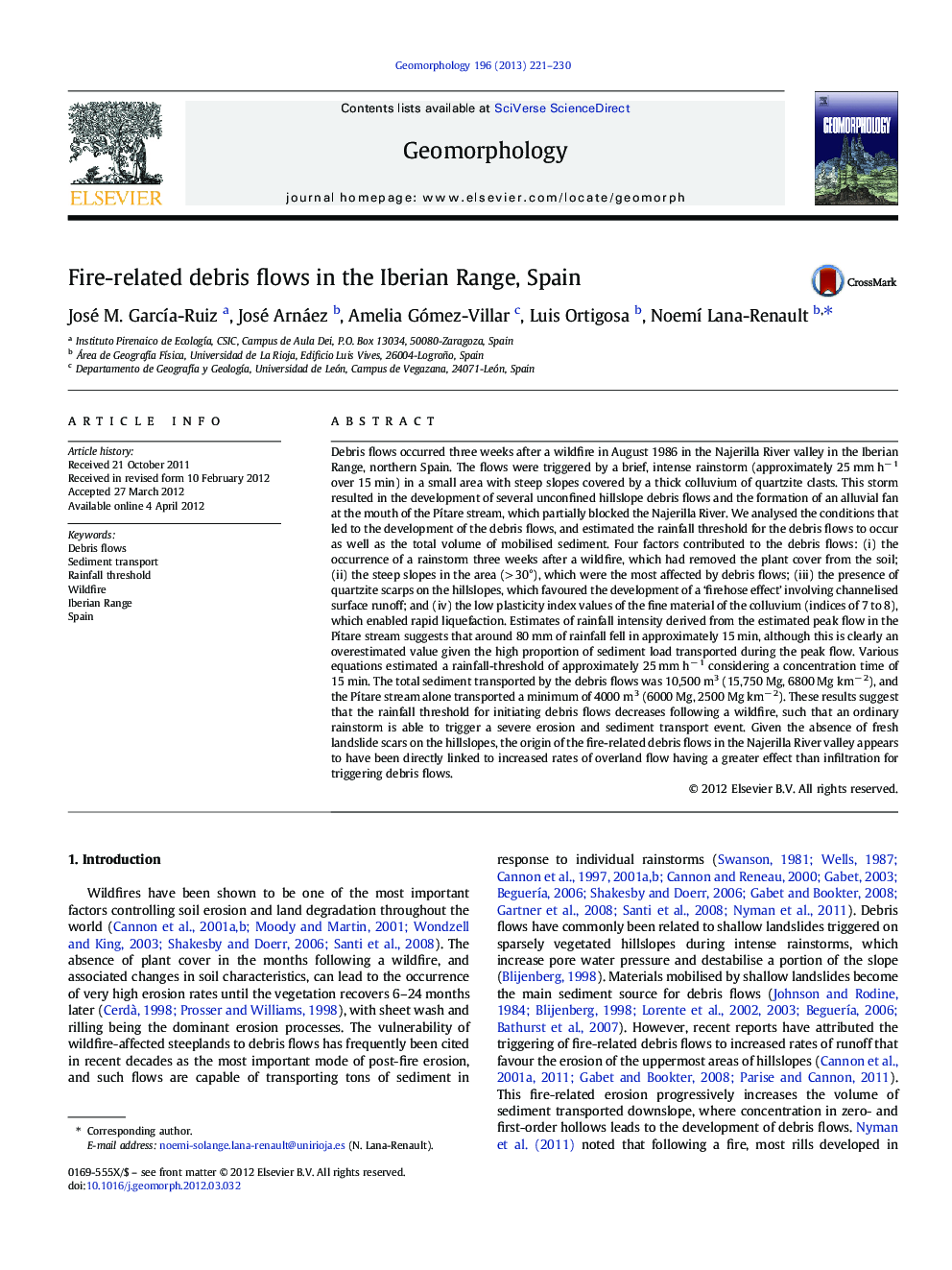| کد مقاله | کد نشریه | سال انتشار | مقاله انگلیسی | نسخه تمام متن |
|---|---|---|---|---|
| 4684863 | 1635453 | 2013 | 10 صفحه PDF | دانلود رایگان |
Debris flows occurred three weeks after a wildfire in August 1986 in the Najerilla River valley in the Iberian Range, northern Spain. The flows were triggered by a brief, intense rainstorm (approximately 25 mm h− 1 over 15 min) in a small area with steep slopes covered by a thick colluvium of quartzite clasts. This storm resulted in the development of several unconfined hillslope debris flows and the formation of an alluvial fan at the mouth of the Pítare stream, which partially blocked the Najerilla River. We analysed the conditions that led to the development of the debris flows, and estimated the rainfall threshold for the debris flows to occur as well as the total volume of mobilised sediment. Four factors contributed to the debris flows: (i) the occurrence of a rainstorm three weeks after a wildfire, which had removed the plant cover from the soil; (ii) the steep slopes in the area (> 30°), which were the most affected by debris flows; (iii) the presence of quartzite scarps on the hillslopes, which favoured the development of a ‘firehose effect’ involving channelised surface runoff; and (iv) the low plasticity index values of the fine material of the colluvium (indices of 7 to 8), which enabled rapid liquefaction. Estimates of rainfall intensity derived from the estimated peak flow in the Pítare stream suggests that around 80 mm of rainfall fell in approximately 15 min, although this is clearly an overestimated value given the high proportion of sediment load transported during the peak flow. Various equations estimated a rainfall-threshold of approximately 25 mm h− 1 considering a concentration time of 15 min. The total sediment transported by the debris flows was 10,500 m3 (15,750 Mg, 6800 Mg km− 2), and the Pítare stream alone transported a minimum of 4000 m3 (6000 Mg, 2500 Mg km− 2). These results suggest that the rainfall threshold for initiating debris flows decreases following a wildfire, such that an ordinary rainstorm is able to trigger a severe erosion and sediment transport event. Given the absence of fresh landslide scars on the hillslopes, the origin of the fire-related debris flows in the Najerilla River valley appears to have been directly linked to increased rates of overland flow having a greater effect than infiltration for triggering debris flows.
► Rainfall threshold for initiating debris flows (DF) is lower following a wildfire.
► DF mobilised much higher sediment yield than floods during the same rainfall event.
► Steep slopes and plant removal after wildfire are main factors triggering the DF.
► The presence of quartzite scarps on the slopes favoured channelised surface runoff.
► The studied DF were consequence of increasing rates of overland flow/clast removal.
Journal: Geomorphology - Volume 196, 15 August 2013, Pages 221–230
